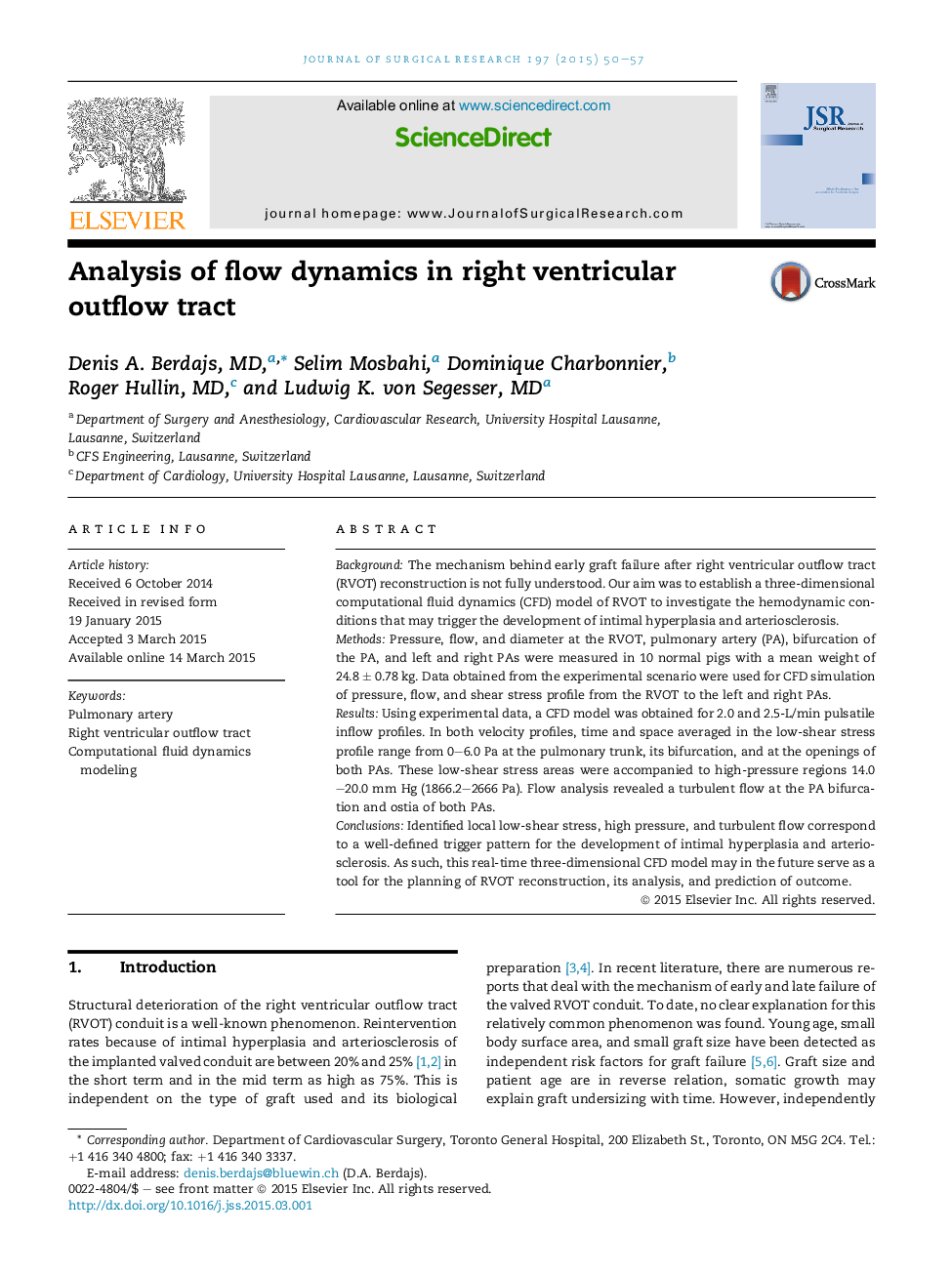| Article ID | Journal | Published Year | Pages | File Type |
|---|---|---|---|---|
| 4299792 | Journal of Surgical Research | 2015 | 8 Pages |
BackgroundThe mechanism behind early graft failure after right ventricular outflow tract (RVOT) reconstruction is not fully understood. Our aim was to establish a three-dimensional computational fluid dynamics (CFD) model of RVOT to investigate the hemodynamic conditions that may trigger the development of intimal hyperplasia and arteriosclerosis.MethodsPressure, flow, and diameter at the RVOT, pulmonary artery (PA), bifurcation of the PA, and left and right PAs were measured in 10 normal pigs with a mean weight of 24.8 ± 0.78 kg. Data obtained from the experimental scenario were used for CFD simulation of pressure, flow, and shear stress profile from the RVOT to the left and right PAs.ResultsUsing experimental data, a CFD model was obtained for 2.0 and 2.5-L/min pulsatile inflow profiles. In both velocity profiles, time and space averaged in the low-shear stress profile range from 0–6.0 Pa at the pulmonary trunk, its bifurcation, and at the openings of both PAs. These low-shear stress areas were accompanied to high-pressure regions 14.0–20.0 mm Hg (1866.2–2666 Pa). Flow analysis revealed a turbulent flow at the PA bifurcation and ostia of both PAs.ConclusionsIdentified local low-shear stress, high pressure, and turbulent flow correspond to a well-defined trigger pattern for the development of intimal hyperplasia and arteriosclerosis. As such, this real-time three-dimensional CFD model may in the future serve as a tool for the planning of RVOT reconstruction, its analysis, and prediction of outcome.
